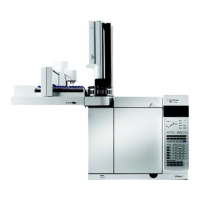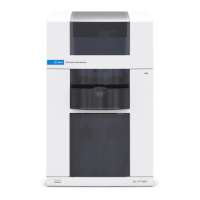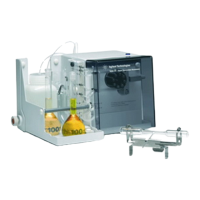132 Operation Manual
9 GC-MS Features
GC/MS Communications
When the 7890B GC and a 5977 Series MSD (or other MS
instrument with Smart Technologies) are configured together,
they communicate with and react to each other. (See the
Installation and First Startup manual for configuration
details.) The two most important events that cause
interaction are venting the MSD and an MS shutdown.
Venting the MSD
When you use the MSD keypad to start a venting, or when
you use the Agilent data system to starting venting, the MSD
alerts the GC. The GC loads the special MS Vent method.
The GC keeps the MS Vent method loaded until:
• The MS becomes ready again.
• You manually clear the MS Vent state.
During the venting process the 5977 Series MSD will notify
the GC that venting is complete. The GC will then set very
low flows at each flow- or pressure- controlled device leading
back through the column configuration chain to the inlet.
For example, for a configuration that uses a purged union at
the transfer line, the GC will set the pressure at the purged
union to 1.0 psi, and the pressure at the inlet to 1.25 psi.
If using hydrogen carrier gas, the GC will simply turn the
gas off to prevent hydrogen accumulation in the MSD.
Note that while in the MS Vent state, the GC will not go into
MS Shutdown after losing communications with the MSD.
MS Shutdown events
When configured with a 5977 Series MSD, the following
events will cause an MS Shutdown in the GC:
• Loss of communications with the MS, when not venting
the MS. (Requires no communications for a length of
time.)
• MSD reports a high vacuum pump failure.
When the GC enters an MS shutdown:
• The GC aborts any current run.
• The oven is set to 50 °C. When it reaches that setpoint, it
turns off.
• The MS transfer line temperature is turned off.

